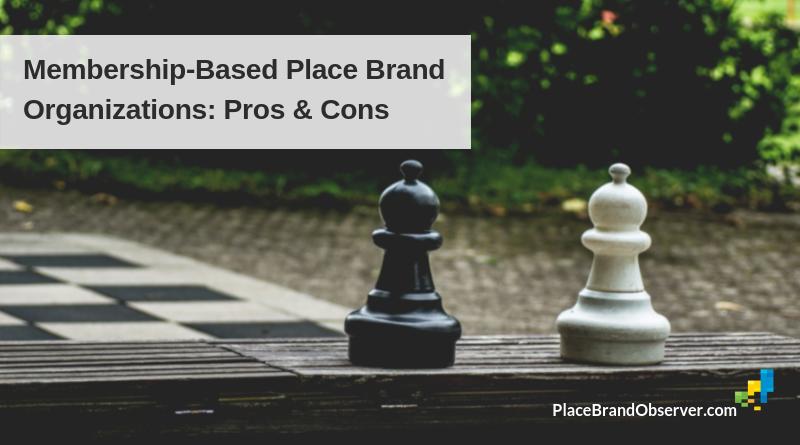What are the pros and cons of membership-based place brand organizations?
A reader question for our panel of place branding experts. Here’s what they answered (in alphabetical order – highlighted respondents are available for consulting, research or as speakers).
Anupam Yog
GCDN – an emerging global network of cultural precincts, places and institutions. A credible attempt to fill a void by facilitating the creation of a peer network of cultural leaders, and the organisations they represent.
Many networks are set up without a purpose or to fulfill a tactical political agenda – this is a waste of energy, time and resource. GCDN scores high on relevance, and has chosen to evolve through an organic, patient approach towards its growth, while adopting a strategic perspective on its long-term vision, mission and purpose. This is a good template to follow.
Gregory Pomerantsev
Membership-based place brand organizations tend to get more involvement, enthusiasm and devotion from their members. When membership is also connected to getting approval from a place brand organization’s board or council, it helps to maintain reputation, quality and engagement of the companies/individuals involved. Stepping onto the brand platform would mean getting a “quality approval stamp” for members.
Jaume Marín
I think membership is completely unavoidable. Companies and different stakeholders should be part of the strategy design and cooperate, and the only way to be involved is being part of it economically. If not, we are playing different games. Forget about “me” and start thinking of “us”.
Jeremy Tamanini
I don’t know a lot about this but I think that many of the industry associations in Washington DC provide good case studies.
José Pablo Arango
In the case of private organizations promoting a place, all private members must contribute in a similar way and there must be an important contribution from the state to ensure that the project will continue.
 Juan Carlos Belloso
Juan Carlos Belloso
Membership-based place brand organizations are a perfect model to engage the key stakeholders in the process (development and promotion / building the brand).
Some of the key challenges are included in my article on how to create place brand partnerships, including how to be inclusive and representative.
One of the challenges is how to design membership systems that allow all stakeholders to participate and don’t discriminate depending on their capacity to contribute with economic resources.
The other key challenges are how to make sure everybody sees the value in being part of the organization and that it is worth to contribute; and how to assure active participation from members.
You can find good examples in the business leaderships organizations (i.e. London First, Partnership for New York City, Barcelona Global), destination management organizations DMOs (i.e. Barcelona Tourism), BIDs and other kind of place brand and promotion associations.
 Pärtel-Peeter Pere
Pärtel-Peeter Pere
Future Place Leadership
We have a Join The Nordics progamme that is membership based. If the reader wishes, they can get in touch with the cities involved (Gothenburg, Copenhagen, Reykjavik, etc.) to ask more about it.
 Robert Govers
Robert Govers
Advisor / Speaker / Researcher
Pros: involvement and commitment
Con: too many captains and a rat race to satisfy everyone asking “what’s in it for me”
Sebastian Zenker
Cons: place brand organizations take time and money
Pros: they give you often a kind of promotional feature (showing your logo etc.), consider you stronger in their decisions (if you are a very close partner) and/or sometimes financial engagement can be handled like donations (in regards to taxes).
However, the strongest selling point is YOUR personal commitment to the community and the joint goals all stakeholders have.
Teemu Moilaanen
Pros:
- clear decision-making rules, leading to ability to make decisions (as a group of stakeholders, which together are “a place”)
- continuity, more strategic approach. Less time needed for securing funding for the next year
- stakeholders perceiving the system as fair
 Tom Buncle
Tom Buncle
Yellow Railroad Consulting /Speaker
Pros: Buy-in from stakeholders; revenue source; commitment as a result of investment; coherence among the group may make it more sustainable and active.
Cons: Can be limited in coverage and unrepresentative of the wider stakeholder community. This can be divisive between members and non-members. It can cause conflict and antagonism by non-members towards place initiatives.
Activities may be driven by the few for the few and not necessarily in the best interests of the place as a whole.
Previous questions answered by the panel here
You’d like to ask the panel a question? Get in touch!
Enjoyed learning about the pros and cons of membership-based place brand organizations? Spread the word!


